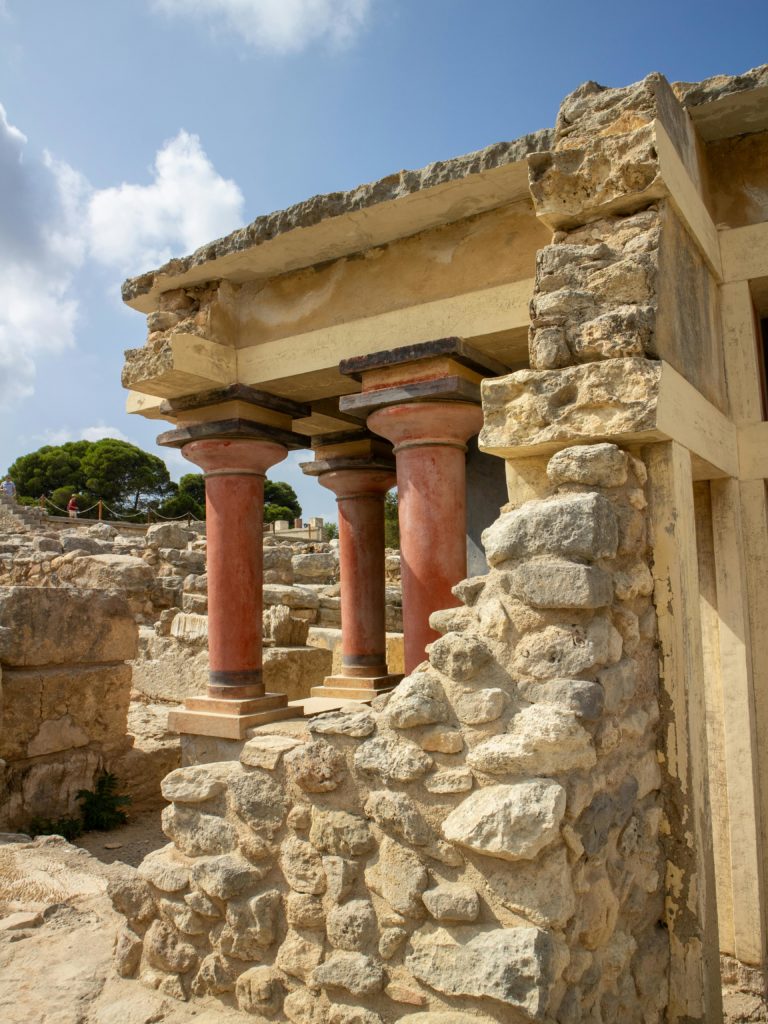
Zakynthos: The Island of Natural Wonders and Blue Paradise
Zakynthos, in the Ionian Sea, is one of Greece’s most spectacular islands, famous for its turquoise beaches.

Located on the island of Crete, near the town of Heraklion, the Palace of Knossos is one of the most iconic archaeological sites in Greece. Dating from the Minoan civilization, this palace is a fascinating testament to the architectural ingenuity and cultural richness of this ancient civilization.
The Palace of Knossos was originally built around 2000 BC. BC and underwent several phases of reconstruction due to earthquakes and other natural disasters. It served as an administrative and ceremonial center for the Minoans, illustrating their power and sophistication.
The palace is located about five kilometers south of the modern city of Heraklion, on the fertile Messara plain. This strategic location allowed easy access to agricultural and maritime resources, essential for the prosperity of the Minoan civilization.
This impressive complex includes hundreds of rooms spread over several levels, connected by labyrinthine corridors. Majestic reception rooms, interior courtyards and sophisticated drainage systems show the technological advancement of the Minoans. The colorful frescoes depicting scenes from daily life and religious ceremonies add to the splendor of the place.

The Palace of Knossos is particularly famous thanks to the legend of King Minos and the Minotaur, a mythological creature locked in the labyrinth beneath the palace. These mythical stories, combined with the historical and archaeological importance of the site, have made Knossos a symbol of Minoan civilization.
The Minoans used advanced techniques, including stucco-covered wooden columns and stone walls. The flat roofs and internal staircases illustrate their mastery of architecture. Innovations like water pipes and sewers also show in-depth knowledge of infrastructure.

The main materials used for the construction of the palace include limestone, gypsum, and wood. The frescoes were painted with natural pigments on fresh plaster, a technique known as fresco, allowing for vibrant, long-lasting colors.
The Minoans exploited local resources, such as cedar wood for columns and local stones for foundations and walls. The pigments for the frescoes were also locally sourced, adding to the durability and beauty of the decorations.
The palace was used for several centuries, but suffered much damage due to natural disasters and invasions. It was definitively abandoned around 1375 BC. BC, after a period of decline and destruction.
The remains of the Palace of Knossos are still located on the original site near Heraklion. This site was partially restored by archaeologist Sir Arthur Evans in the early 20th century, allowing visitors to better understand its original grandeur.
Today, the site is protected by Greek archaeological organizations. Continuing efforts are made to preserve the remaining structures and frescoes, and to allow visitors to experience this treasure of ancient history.
| News | Products | Greece | Greek Recipes | Our Producers and artisans |

Zakynthos, in the Ionian Sea, is one of Greece’s most spectacular islands, famous for its turquoise beaches.

Throughout the year, Paros is alive with festivals and cultural events celebrating its traditions and heritage.

Perched on the slopes of majestic Mount Parnassus, the sanctuary of Delphi embodies a time when spiritual beliefs, prophecy and art intersected to form one of the most important religious centers of ancient Greece.
All our products come from small producers and craftsmen to guarantee their authenticity.
All our payments are secure thanks to our service providers who comply with the latest standards.
Our customer service is available to offer you the best possible support.
We deliver in Greece and internationally. Currently available in Europe only.